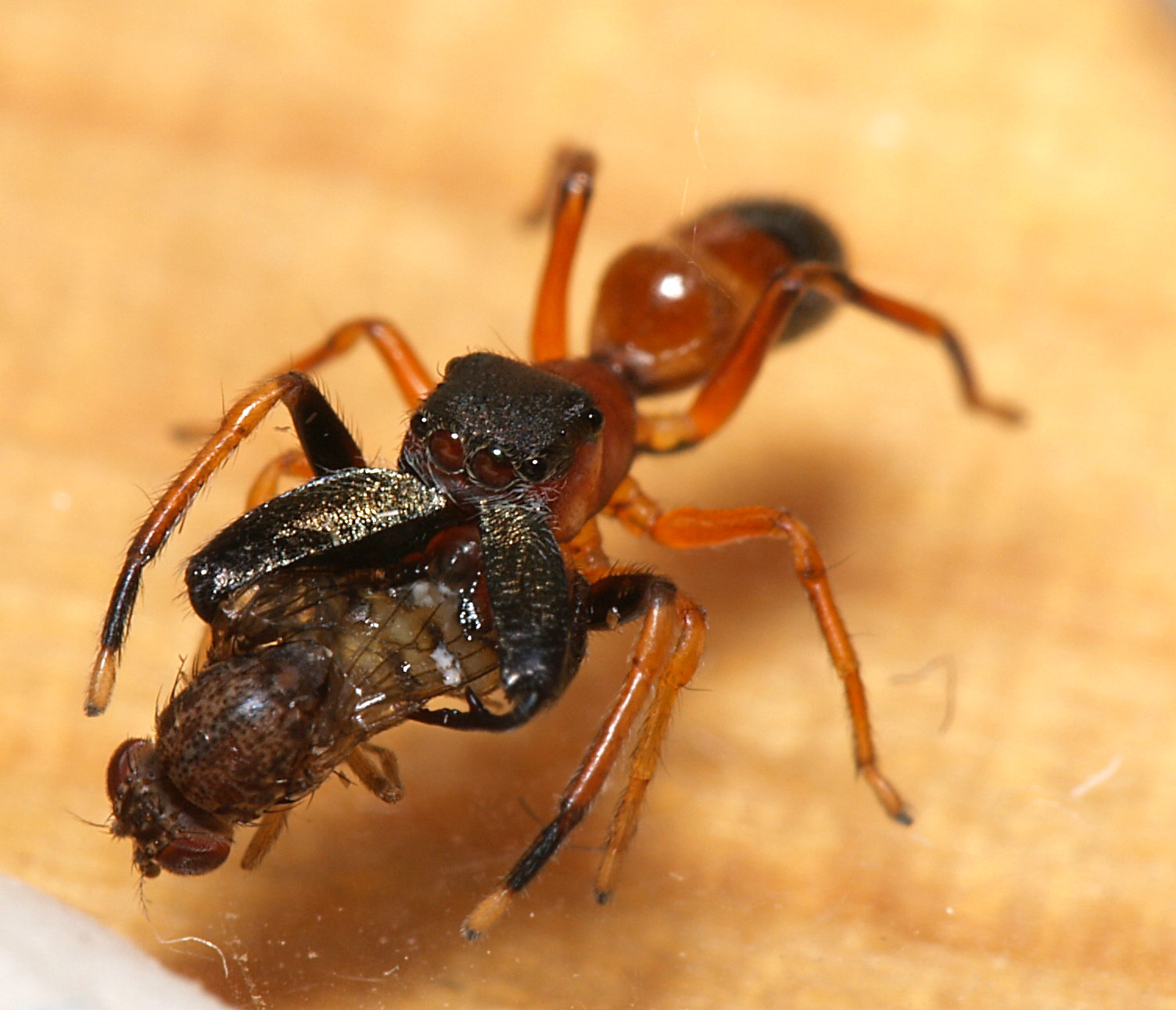
Pressed flat against a burnt tree stump, this moth is engaged in “face-mimicry” to ward off predators. Source: Sportsman Creek Conservation Area
Mimicry, often seen when an animal or plant resembles another object in its surroundings for concealment or protection from predators. There are many different kinds of mimicry, ranging from aggressive mimicry, where a predator mimics another organism to trap its prey, to Batesian mimicry, where a harmless species resembles another harmful or inedible species as a form of protection. However, mimicry is most often associated with stationary objects and not dynamic traits such as movement. Protective Batesian mimicry is an example of adaptive evolution, where an organism undergoes changes to increase its chances of survival.
Despite spiders being seen as predators, they still require defensive mechanisms against larger animals that prey on spiders (ie. small birds, lizards, and other spiders). One choice of animals that spiders have been seen to mimic is ants. Why ants? Well, over time, ants possess many different species-specific defensive traits that warn potential predators to look elsewhere for food; such as venomous stings, chemical defenses, and powerful mouthparts. Mimicking ants can thus serve as a deterrent towards other

Myrmarachne formicaria jumping spider. Source: Amiens Fauna and Flora
predators. Shamble et al. 2017 go in depth about how the jumping spider (Myrmarachne formicaria) mimics ants locomotion and then testing to see how effective it is in losing the interest of larger predatory spiders.

Behavioural playback experiments. (a) Snapshots of the three target types used in the playback experiments. (b) The probability of observing a predator attack based on the target type. Predators attacked non-mimic targets significantly more than the other target types and showed no difference in attack probability between ant mimic and ant targets (Wilcoxon each-pair test). Source: Shamble et al. 2017
So what did they find? By using three criteria to represent the different phases of motion (short, single step, and long trajectory) alongside the trajectory of the walking path (curved, regular, and sin-wave shapes), the locomotion of ants was compared to that of the jumping spider. Walking in a zig-zag line is specifically seen in ants following a trail, and the jumping spider was able to copy it almost flawlessly. The only difference seen was that the mimic would pause every 100 milliseconds and would often reproduce this behavior in settings that ants normally do not. Only animals with fast visual systems would be able to detect these pauses, potentially helping them categorize the mimics as “fakes”. In the second part of the experiment, an LCD screen showing the different animations of non-mimetic spiders, mimic spiders, and ants were shown to the predatory spider, and whether or not it pounced towards the target was recorded. Non-mimetic jumping spider targets were attacked 4.5 times more than ant targets and three times more than mimic targets, and there was no significant difference between the number of attacks on ants and mimics (Figure 1).
Overall, these traits are consistent with the idea of protective Batesian mimicry, shown when predatory spiders were less likely to attack the spiders mimicking ants. However, how did the spiders evolve to mimic ants? Despite Myrmarachne being a jumping spider family, they are not able to jump. This could lead them to have a different diet from other jumping spiders due to not needing the energy to coil and jump, and instead using the energy in actively foraging for food in an ant-like motion. Foraging for food instead of actively hunting and stalking prey could be another change that helped them survive by finding a niche separate from that of other spiders. This article sets a quantitative benchmark of trait values that can be used in future research in documenting other forms of dynamic mimicry and help create a model of how mimetic systems evolved and then stabilized over time.
Reference:
Shamble, P. S., Hoy, R. R., Cohen, I., & Beatus, T. (2017). Walking like an ant: a quantitative and experimental approach to understanding locomotor mimicry in the jumping spider Myrmarachne formicaria. Proceedings of the Royal Society B Biological Sciences, 284(1858).
